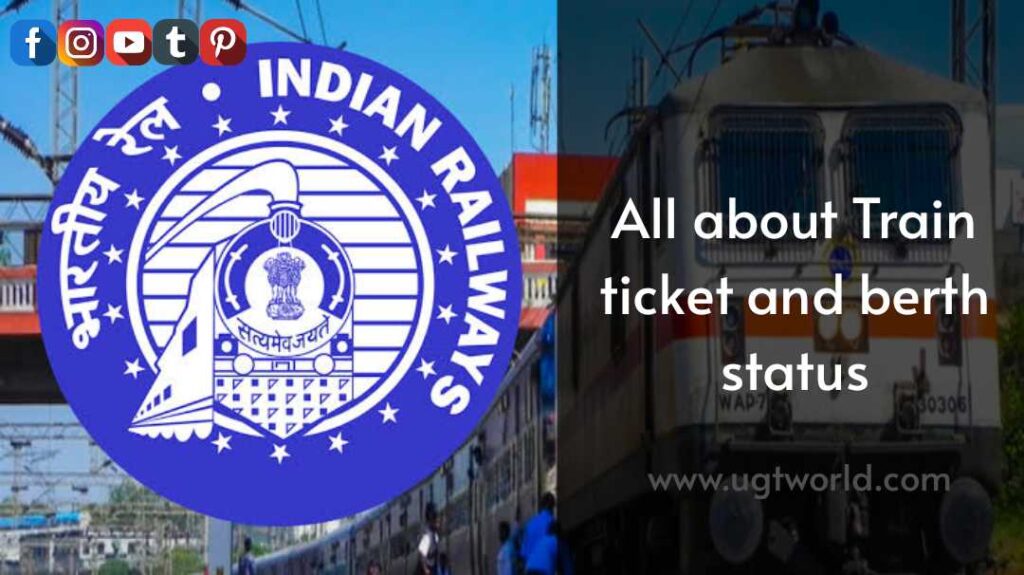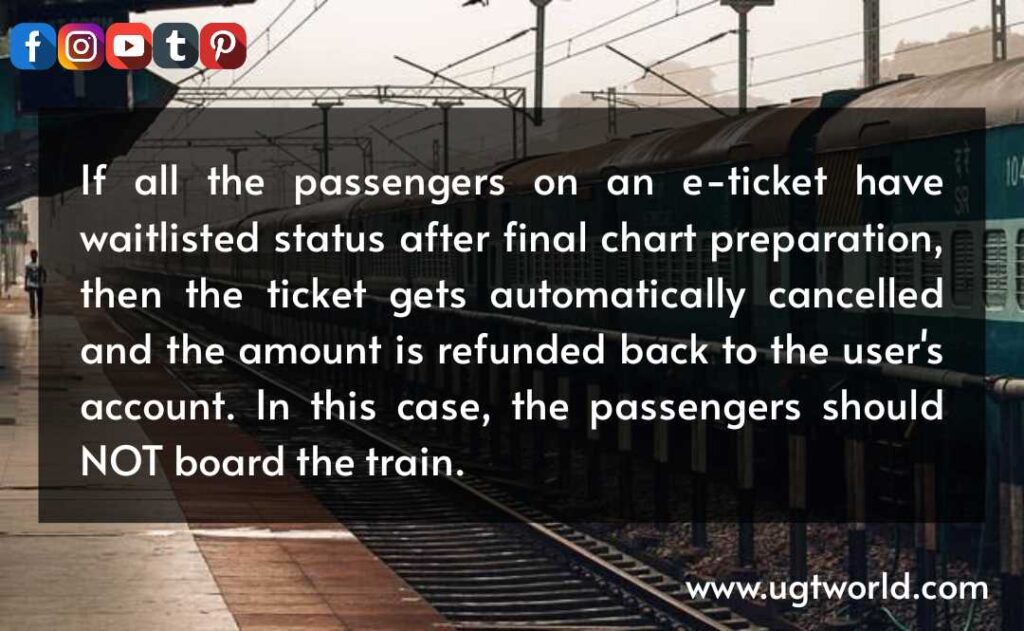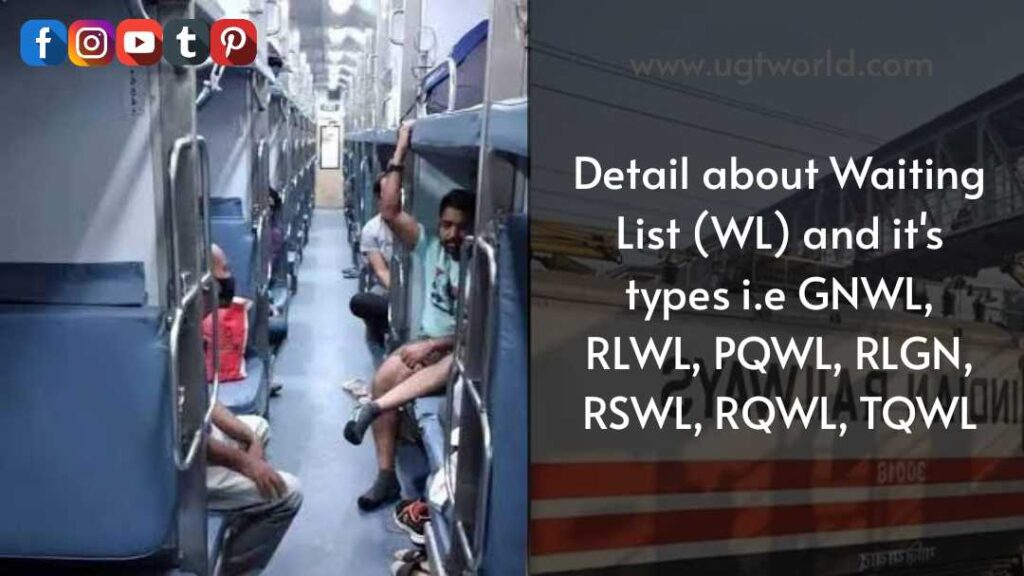How to know about your Train ticket is confirm or not?

The advance booking for indian train ticket opens 120 days before the date of journey. Tickets can be booked both offline at Passenger Reservation System (PRS) or online using IRCTC website. Ticket booked online can be an e-ticket ( which is a print-out / sms) or an i-ticket wherein the PRS ticket is couriered to the passenger.
All the tickets issued have a unique 10-digit PNR (Passenger Name Record) which you should quote for any correspondence regarding your ticket / journey. The ticket also contains all the other journey details like train number, journey date, travel class, origin, destination, ticket status, berth details for confirmed tickets, passenger details etc. Maximum of six passengers can travel through one ticket. But just having a ticket does not guarantee that your journey is confirmed. It all depends on the ticket status. All the passengers in a ticket are assigned a ticket status which can be Confirmed (CNF full berth), RAC (a half berth) or waiting (WL). These are explained below in detail:
Confirmed (CNF) and Reservation against cancellation (RAC) ticket status
• Confirmed (CNF): In this case the passenger gets a full berth for the journey. In case of first AC (1A), the passenger may not get berth details even for confirmed ticket when ticket is issued. This is because the berth allotment for this class is done manually by the TTE on chart preparation.
• Reservation Against Cancellation (RAC): If a user has been issued an RAC ticket, then most likely his ticket will get confirmed by the time of chart preparation and he will get a berth. In case the ticket remains RAC even after chart preparation (if the coach number is preceded by R i.e. RB1, 31 means RAC seat no 31 in coach B1), then user is allotted a half berth (seat) i.e. two persons having RAC ticket status are allotted one side-lower berth. The TTE is obligated to allot berths which are cancelled after chart preparation to these RAC passengers.
Know detail about Waiting List (WL) and it’s types i.e GNWL, RLWL, PQWL, RLGN, RSWL, RQWL, TQWL
• Waiting List (WL): If the passenger status is marked as WL followed by a number then the passenger has a waitlisted status. This can get confirm only if the passengers who have booked before you for the same journey cancel their ticket. For example if the status is GNWL4/WL3 , then this means that you have a waiting list of 3 (the latter number) and your ticket will get confirmed only if 3 passengers who have booked before you for the same journey happen to cancel their journey. Similarly, GNWL/AVAILABLE means that current status of your ticket is CONFIRMED because some passengers who booked before you have cancelled their tickets. This status also gives some insight into the current ticket cancellation trends for this journey. For more on this, visit Trainman’s trend analysis. In case the passenger status is waitlisted even after the chart preparation, then the passenger is not allotted any berth.

(If at least one passenger has RAC or confirm CNF status while other passengers on same ticket have waiting list status, then the e-ticket DOES NOT get cancelled automatically and the passengers are allowed to board the train.)
• General Waiting List (GNWL): GNWL waitlisted tickets are issued when the passenger begins his/her journey at the originating station of a route or stations close to the originating station. This is most common type of waiting list and has got the highest chances of confirmation.
• Remote Location Waiting List (RLWL): RLWL means ticket is issued for intermediate stations (between the originating and terminating stations) because usually these are the most important towns or cities on that particular route. This type of tickets will be given a separate priority and confirmations will depend on the cancellations of a destination confirmed ticket. Remote location stations prepare there own chart 2-3 hours before the actual departure of train. For this type of ticket there are less chances of confirmation.
• Pooled Quota Waiting List (PQWL): PQWL is shared by several small stations. Pooled Quotas normally operate only from the originating station of a route, and there is only one Pooled Quota for the entire run. The Pooled Quota is generally allotted for passengers travelling from the originating station to a station short of the terminating station, or from an intermediate station to the terminating station, or between two intermediate stations.

• Remote Location General Waiting List (RLGN): RLGN is issued when a user books a ticket where WL quota is RLWL. This means after ticket booking RLWL gets named as RLGN.
• Roadside Station Waiting List (RSWL): RSWL is allotted when berths or seats are booked by the originating station for journeys up to the road-side station and distance restrictions may not apply. This waiting list has also very less chances of confirmation.
• Request Waiting List (RQWL): If a ticket is to be booked from an intermediate station to another intermediate station, and if it is not covered by the general quota or by the remote location quotas or pooled quota, the request for the ticket may go into a Request Waiting List (RQWL).
• TQWL (Formerly CKWL): For tatkal tickets, the waiting list issued used to be CKWL which has been changed to TQWL by the Indian Railways since December 2016. If tatkal ticket goes up, it directly gets confirmed and doesn’t go through RAC status unlike GNWL. During chart preparation, general waiting list (GNWL) is preferred over tatkal waiting list (TQWL) therefore tatkal waitlisted tickets are less likely to get confirmed.
Do check neatly the information above we’ve given. Try to follow that while booking the tickets. And once it is confirmed then enjoy your journey happily and safely.
Write with us✍?
Greetings to Everyone from TeamUgtWorld! Anybody who wants to write whatever his/her Heart wants to. They can now publish their content with us on our platform @Ugtworld. For more information click on the following link…


